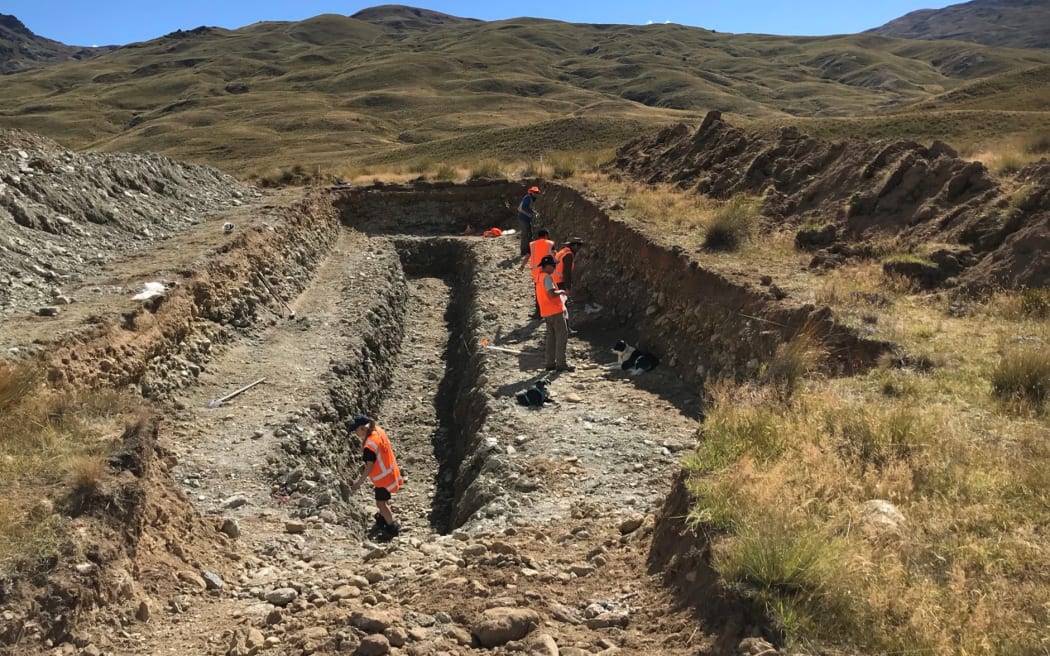Aotearoa New Zealand is in a collision zone. It is the place where the mighty Australian and Pacific tectonic plates meet. The main fault line runs the length of Te Wai Pounamu and off the east coast of Te Ika a Māui, but the pressure of these two plates meeting causes cracks and fissures across Aotearoa.

The team at work inside the trench. Photo: RNZ
Follow Our Changing World on Apple Podcasts, Spotify, Stitcher, iHeartRADIO, Google Podcasts, RadioPublic or wherever you listen to your podcasts.
These interconnected fault lines rupture at different times, releasing some of the pressure of this massive collision. Some of them rupture relatively frequently. We know that part of the main fault line, the Alpine Fault, is one of these, producing large earthquakes about every 300 years. Others are low recurrence earthquake fault lines, with a larger time interval of more than ten thousand years between ruptures.
The Nevis Valley fault is one of these low recurrence ones. Found in the grassy high country of Otago it runs the length of the Nevis Valley, up to the Kawerau Gorge. Past studies have indicated that it ruptures every 10 to 12,000 years.

Geology Masters student Ashleigh Vause cleans off the bottom of the trench. Photo: RNZ
This was determined by a method called paleoseismic trenching – digging a deep trench perpendicular to the fault line and looking at the sedimentary layers for evidence of pre-historic earthquakes. This was first done on this fault in the 1980s, but recent advances in technology and dating techniques warrant a second look, says Professor Mark Stirling of the University of Otago.
Stirling is co-lead of an Earthquake Commission-funded project to investigate the seismic risk in low seismicity areas in Southland and Otago.
Dr. Jack Williams, a postdoctoral researcher at the University of Otago, is also working on this project, and he is part of the team who are carefully cleaning and marking the trench wall. Once the wall is tidied up after the digger’s impact, a grid is set up, and the visible sedimentary layers are marked.
This is the beginning of the tricky interpretation step.
Working through the breaks, displacements, and oddities they see in these layers, the geologists must think back in time and in 3D space to make sense of what they are seeing. This is best done, says Stirling, in a process called ‘participatory review’ – where other paleoseismic experts take part in the trenching process so that they can bounce ideas, and suggest interpretations. Experts such as the University of Canterbury’s Professor Andy Nicol, who is visiting to lay another set of eyes on this trench wall.

Andy, Ashleigh, James, Govinda, Mark and James with dogs Baz and Sage at the second trench site. Photo: RNZ
Ultimately what the group hope to figure out is the pattern of rupture on this Nevis Valley fault line, as well as confirming whether it links up with the Cardona to Wānaka fault line. This will allow them to update the hazard seismic maps of southern Aotearoa.
To learn more:
- Our Changing World has an extensive back catalogue of episodes about earthquake science, including an episode about the complexity of the 2016 Kaikōura earthquake mentioned in this piece.


